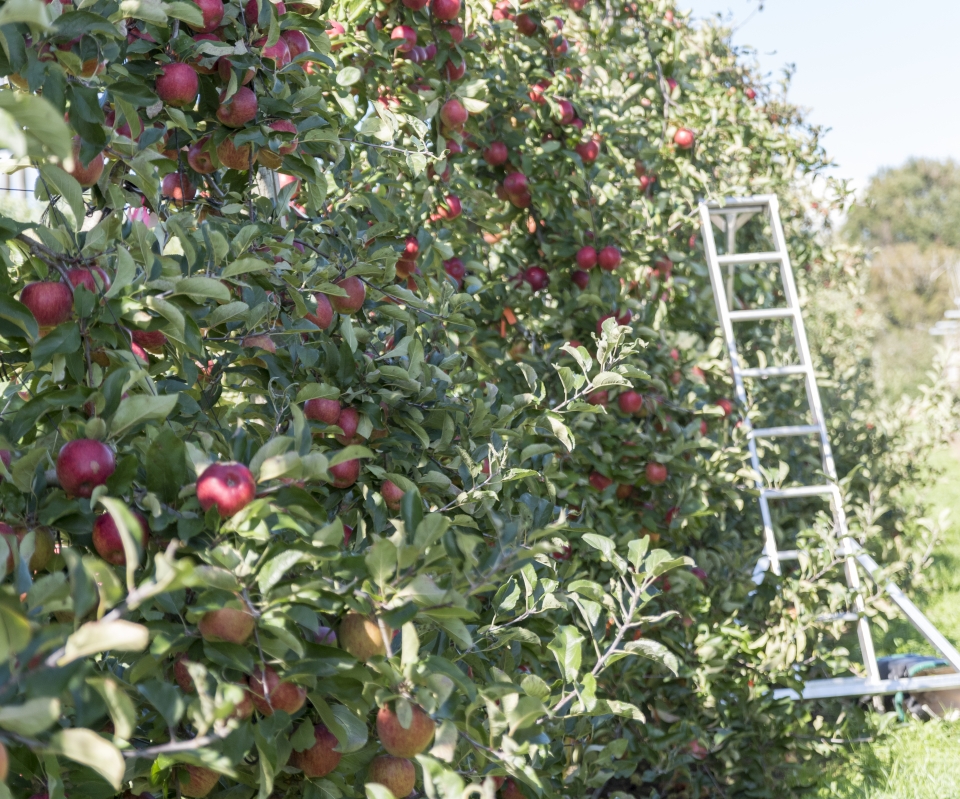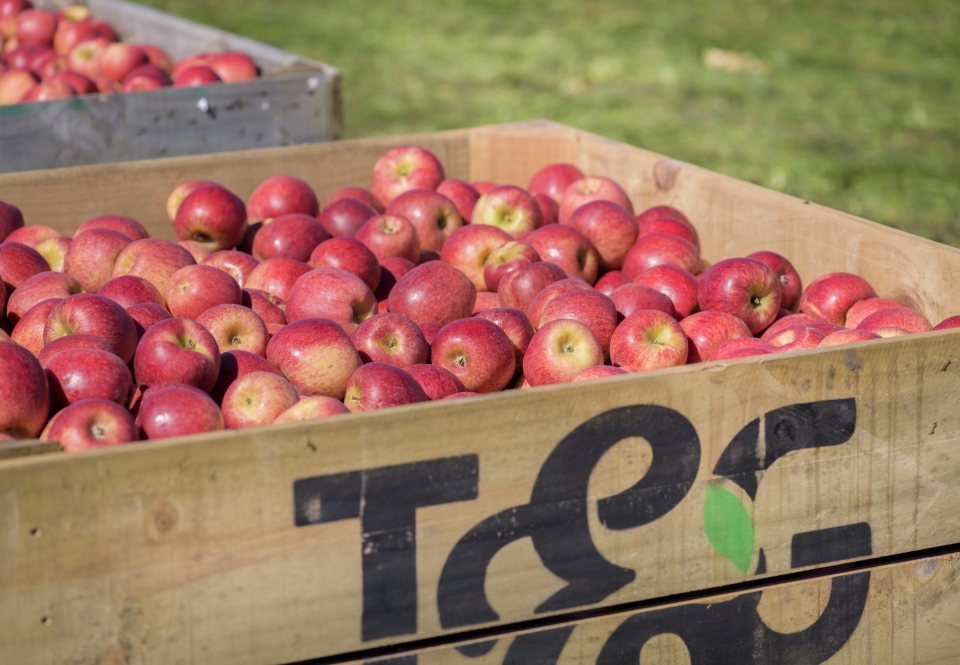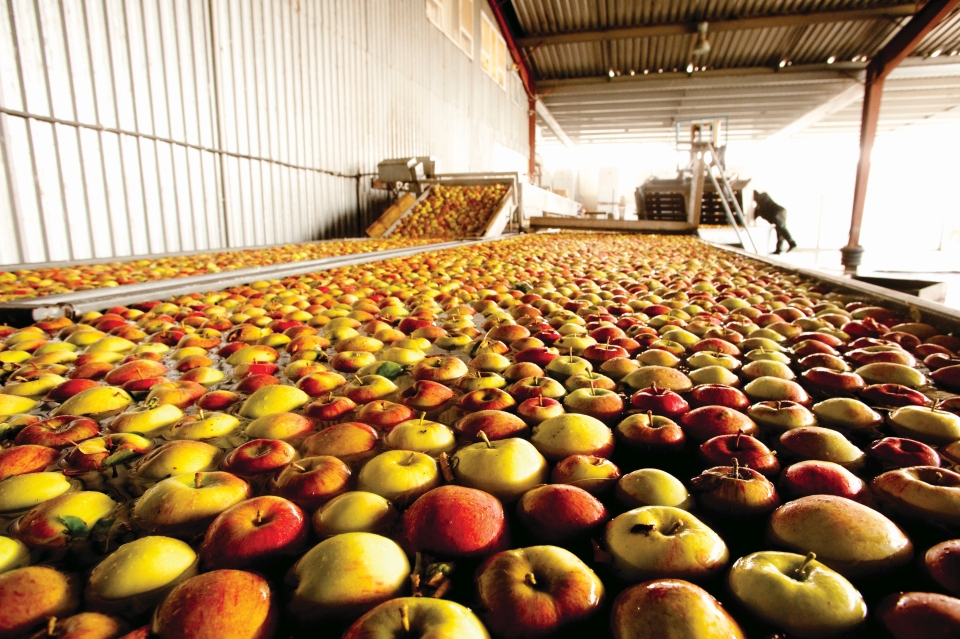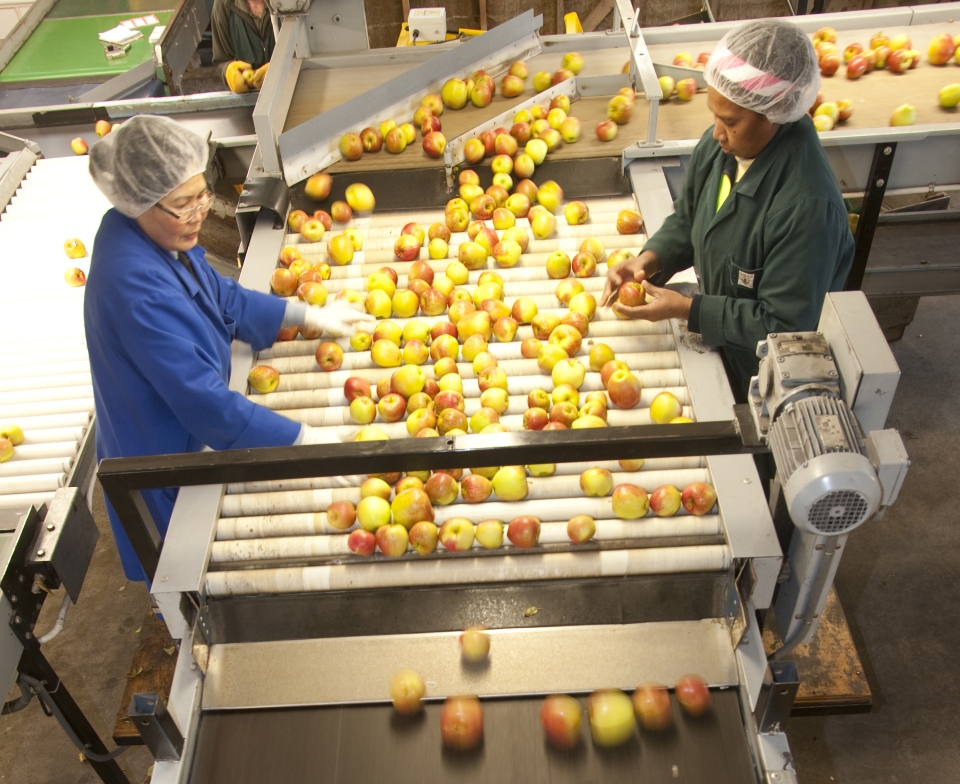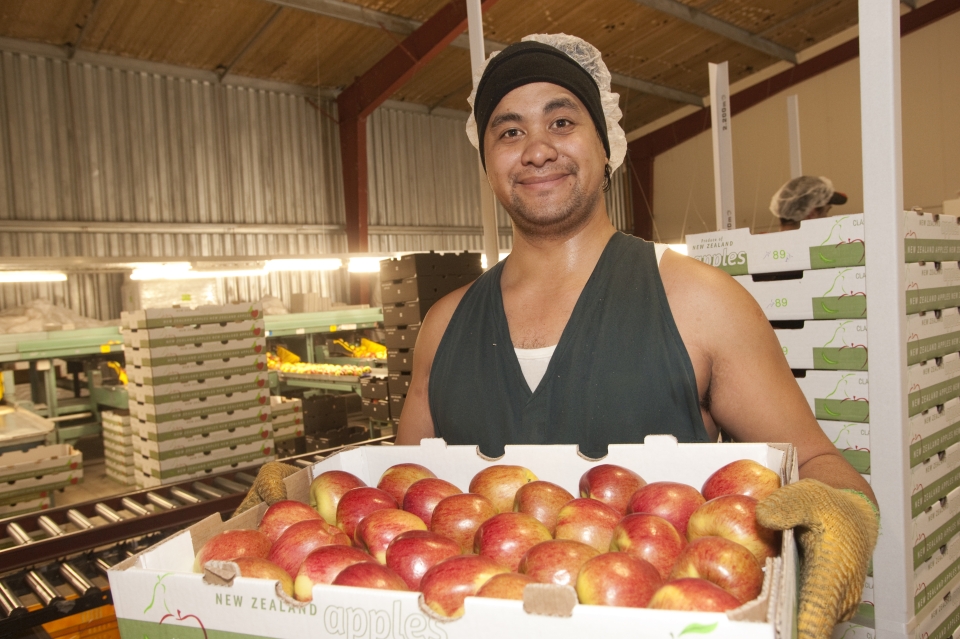Time of harvest
The decision on when to harvest fruit is based on its stage of maturity. If fruit are harvested when immature, they will not have the right taste and aroma. If left on the tree too long, they soften and may develop a greasy skin.
Picking and packing
The apple-picking season lasts several months, as each cultivar becomes ready for harvest at slightly different times. Export harvesting may begin in February and finish in April.
Apples are picked by hand, usually into bags slung across the picker’s chest. The fruit is emptied into larger wooden bulk bins, holding around 400 kilograms. These bins are quickly moved to a cool store or a grading shed.
Apples are put in water and floated off to be cleaned and graded. They are graded for visible defects, usually by people on a grading table. They then pass under electronic colour sorters and weigh cells before passing onto separate lanes for packing.
Fruit are normally packed into cardboard boxes on fibre trays for protection during transport.
Pack house technology
Technology is helping apple growers to supply a better-quality product. Scanners can identify and sort fruit. Apples with blemishes are automatically removed. Robotic pallet stackers and strapping machines package apples precisely and without damaging fruit.
Storage and transport
To preserve the fruit quality, apples are stored in cool stores. To slow the ageing process further, oxygen and carbon dioxide levels can be controlled. Once fruit has cooled, it needs to be kept at these low temperatures even during shipping.
Traditionally, apples were sent from New Zealand to overseas markets in the bulk holds of ships. Here the temperature was carefully controlled. More fruit is now being despatched in containers, some of which have controlled oxygen and carbon dioxide levels.
Export markets
Key markets are the UK, continental Europe, the USA and South-East Asia. Exporters need to know about the market requirements in the countries they export to. There are set rules around pests and diseases, and preferences for apple size and quality, and cultivars.
To increase exports New Zealand's apple industry has worked on
- developing new apple varieties
- increasing the yield - the number of apples produced on each tree
- packing and storage technology to increase the resilience and shelf life of apples
- reducing chemical residues
People all over the world want to buy apples that are grown naturally with as few artificial pesticides and fertilisers as possible. New Zealand is able to produce fruit with some of the lowest levels of chemical residues in the world.
The Envy™ apple variety was developed in New Zealand. Envy™ was crowned ‘favourite apple’ of 2017 by American consumers in a US Apple Association competition comparing 32 of the world’s most popular varieties. 
New Zealand market
New Zealand supplies most of its own apples, fresh or as juice. Some fresh fruit is imported from the US, China and Australia. Canned apples are imported mostly from Australia.
Ready for a quiz? Try the "Storing and Exporting Apples" interactive activity.

